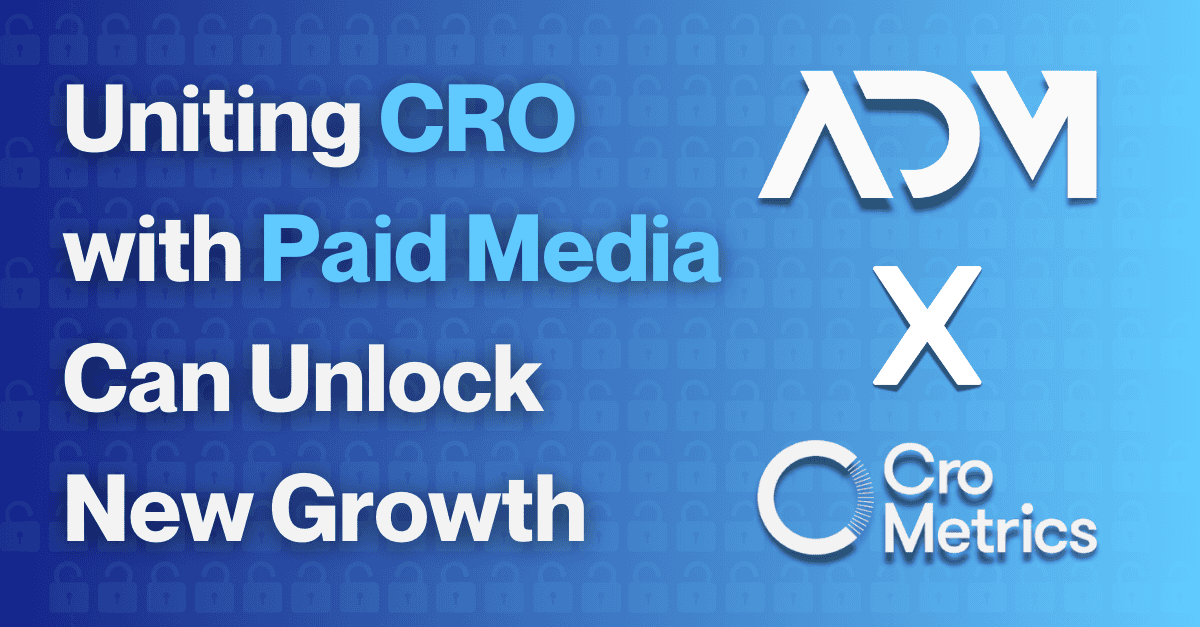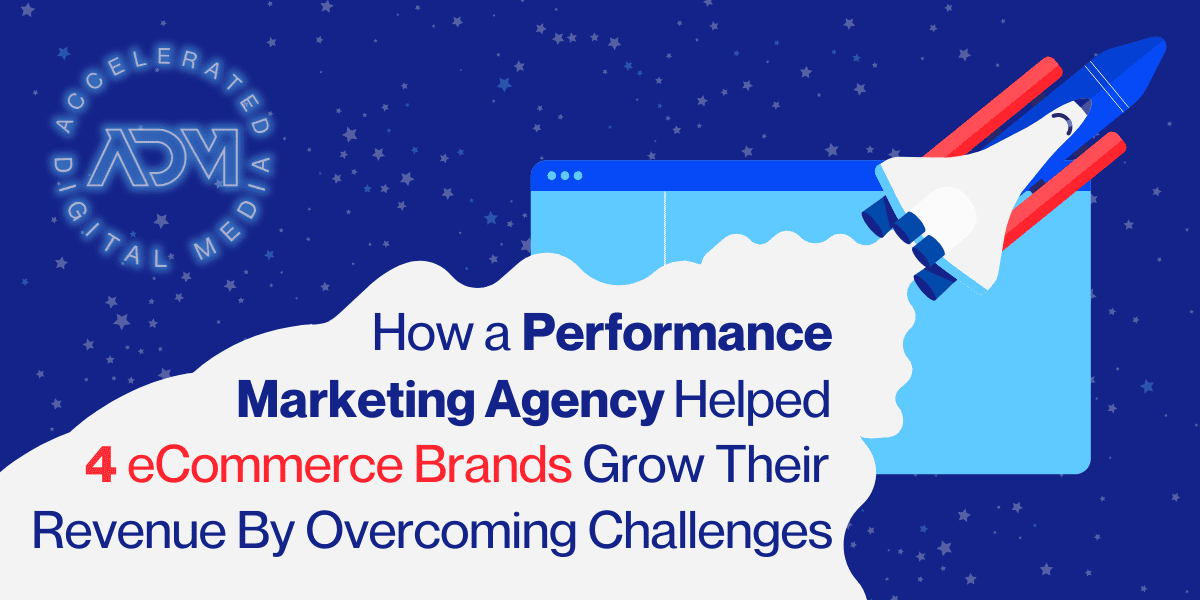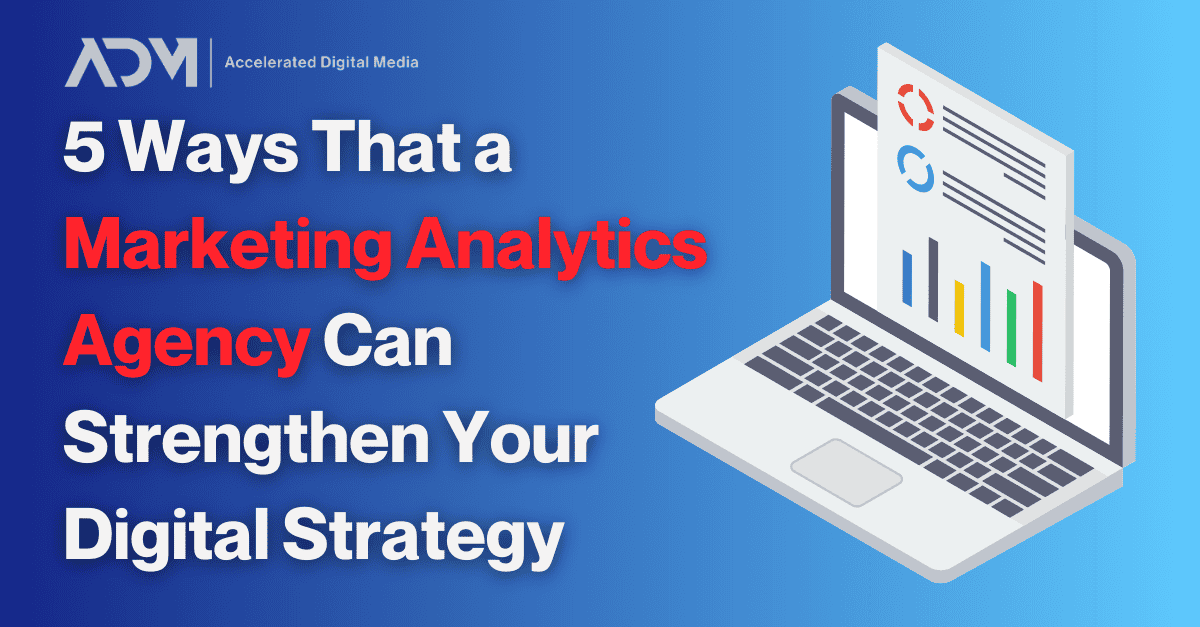In digital marketing, it’s best not to think in silos. Every part of your strategy is interconnected, and businesses today need to skillfully merge their paid media and conversion rate optimization (CRO) programs to stay competitive and deliver the best possible performance.
Recently, ADM’s CEO Tellef Lundevall and Cara Binsfield, the Director of Integrated Strategy at CRO agency Crometrics joined up for a webinar to discuss this important intersection in marketing. During the conversation, they discussed a “flywheel” framework for thinking about user engagement and shared examples of how this work had produced impressive growth for clients.
The Growth Marketing Flywheel
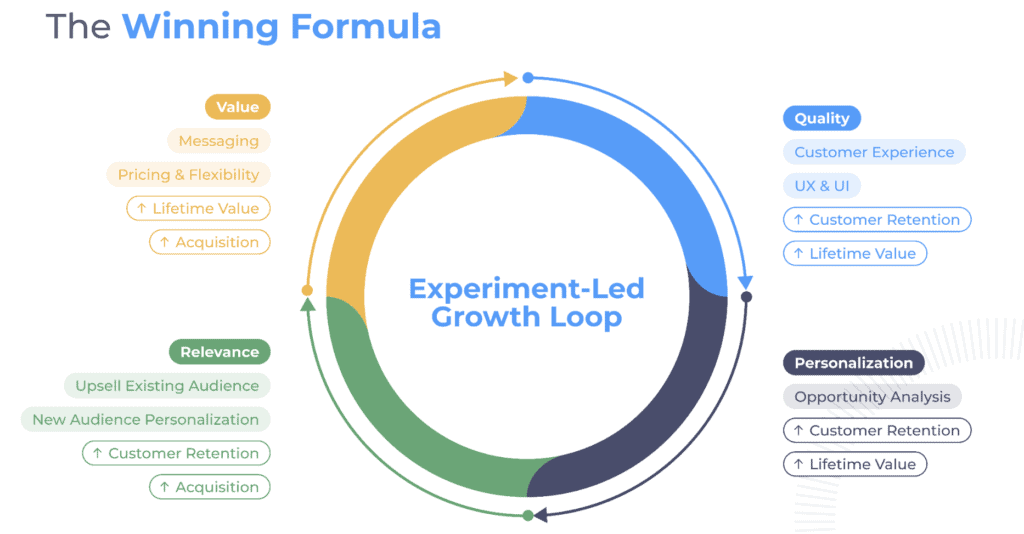
Call it what you want to—a circle of success, a cycle of engagement—Lundevall laid out what he called a “flywheel” representing the aspects of the customer journey that brands need to understand in order to tailor to their online outreach. The four components of this framework are:
- Relevance: It’s vital to ensure your message and ad creative align with user needs and intentions while maintaining consistency throughout the entire interaction process. Creating a clear link between the ad, landing page, and conversion path ensures that users understand and see the direct benefits of the presented solution.
- Value: Brands stand out from their competitors by successfully offering value propositions that not only address the individual’s pain or needs, but also establish credibility. Unique selling points, social proof, testimonials, and guarantees can lend the brand authenticity and evoke trust in users.
- Quality: Focusing on a high-quality landing page experience with a frictionless UX and UI that reinforces ad creative messaging and provides a seamless user journey. A well-structured design, clear navigation, and compelling visuals enhance the overall experience and encourage users to follow through toward conversion goals.
- Personalization: By gaining an in-depth understanding of your customer segments, you can create tailored messaging for different audience groups that will build trust and foster brand loyalty. The more a user feels understood by a brand, the more likely they are to engage and potentially convert.
“The key element that drives the success of this ‘flywheel’ is ultimately the cohesiveness and strategy from the first second you deliver an ad to the last moment the recipient of that ad is interacting with your content,” Lundevall said.
By synthesizing their paid media with their CRO strategy, brands can create a cohesive and targeted approach across all channels that can foster improved user engagement, higher conversion rates, and ultimately, business success.
Tailoring User Experiences Enhances CRO
To further the importance of synthesizing these two fields of digital marketing, Binsfield used the example of a skincare brand that faced declining returns on its paid media investments. By implementing targeted CRO strategies and conducting A/B tests on different landing pages for various audience segments, the brand achieved remarkable conversion improvements, including:
- A 23% increase in conversions from TikTok users by creating a dedicated landing page tailored to the short-attention-span nature of that social media app.
- A 20% increase in conversions from high-intent Meta users by directing them straight into the subscription journey and bypassing the need for landing page education or persuasion.
- An 8% increase in conversion rate by developing a general landing page for users interested in skincare formulations by showcasing their unique benefits, ingredients, and compatibility with different skin types.
“It was really thinking about the users, where they’re coming from, and what their goals were with their skincare,” Binsfield said. These strategically customized and engaging user experiences significantly enhanced the brand’s return on investment.
Delivering Conversions by Better Addressing User Needs
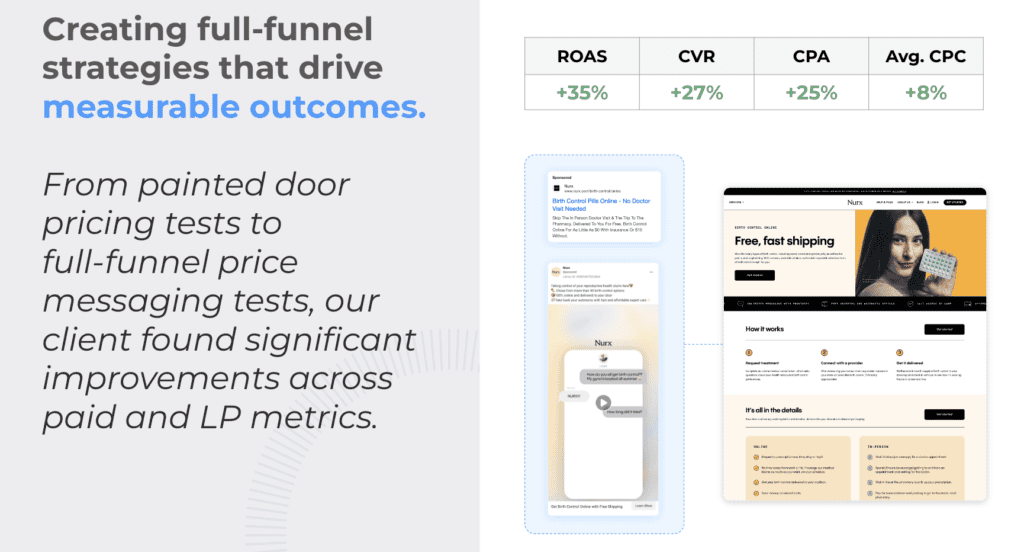
Lundevall detailed ADM’s collaborative work with Crometrics on behalf of a major telehealth brand to demonstrate the value of aligning paid media and CRO strategies. An ad campaign focused on product pricing search queries, paired with landing page variation tests, helped the client achieve:
- A 20% increase in conversion rate that demonstrated how users react when the landing page hones in on the price-focused queries that brought them there.
- A 35% increase in return on ad spend due to the confidence thanks to the quality of both the ads and their destination
These tests did result in an 8% increase in cost per click, which may have occurred because enhanced ad and landing page specificity can shave off some phantom clicks from low-intent queries. But that increase can be superficial if the downstream engagement numbers improve so dramatically.
“Ultimately, the benefit far outweighed that 8% increase in cost per click, and it was an incredible joint effort, between testing search queries and ads on Google and the landing page work that Cara and her team were executing,” Lundevall said.
Looking at the Big Picture
As the webinar demonstrated, there’s incredible value in taking an intentional, big-picture approach to your CRO and paid media strategies. To close out the conversation, Lundevall and Binsfield also fielded several audience questions, including:
- How can brands confront customer needs and pain points in their paid media strategies?
- How can advertisers use CRO to increase lifetime value?
- What integrated media strategies are best primed to work in an increasingly AI-driven and cookie-less advertising environment?
- How can advertisers ensure data integrity from new and emerging platforms?
…and more. Watch the full conversation below. And if you’re interested in working with a growth marketing partner capable of creating the rigorous, full-funnel CRO and paid media strategies detailed in this webinar, consider reaching out to the ADM team for a conversation.


